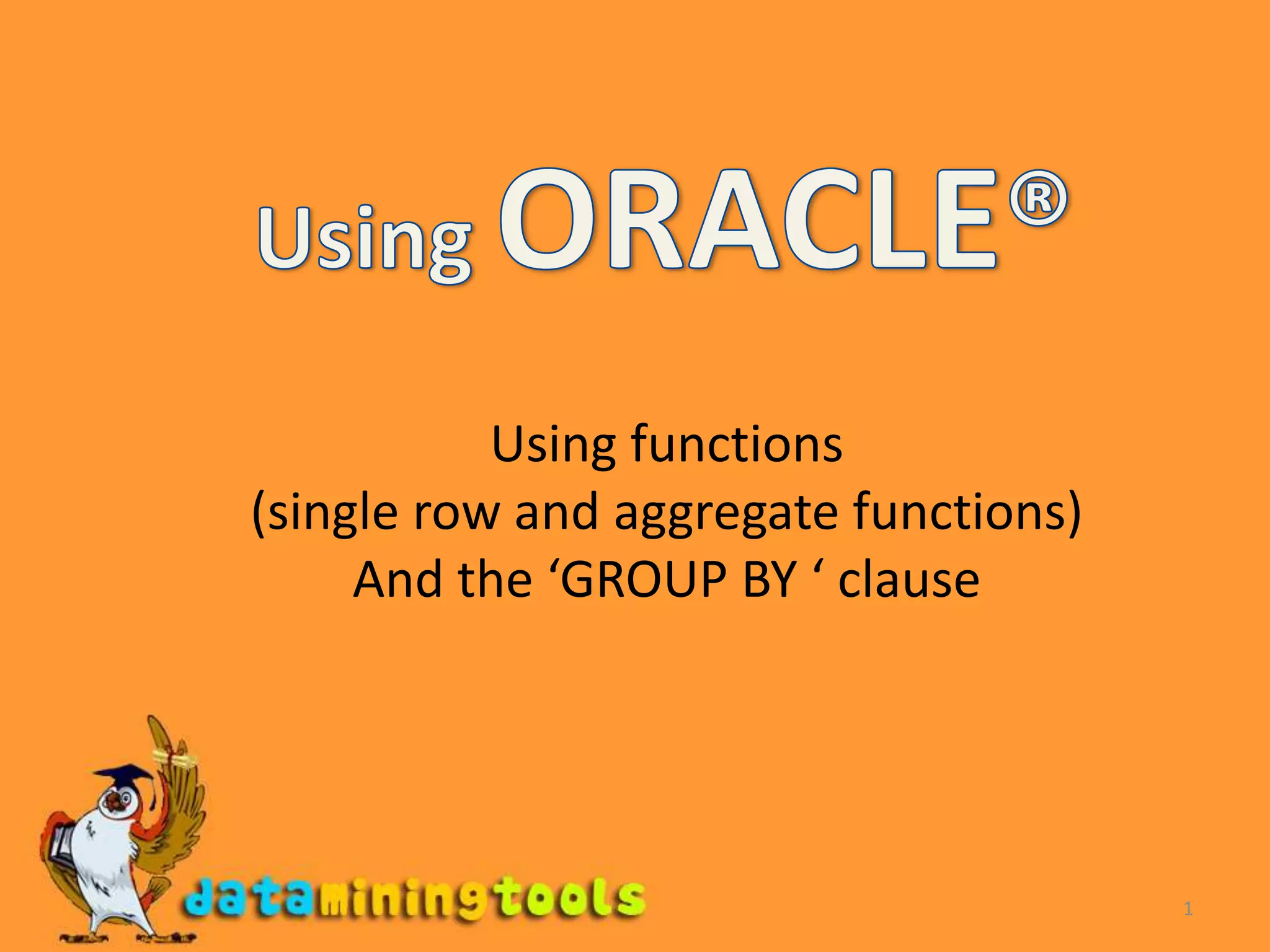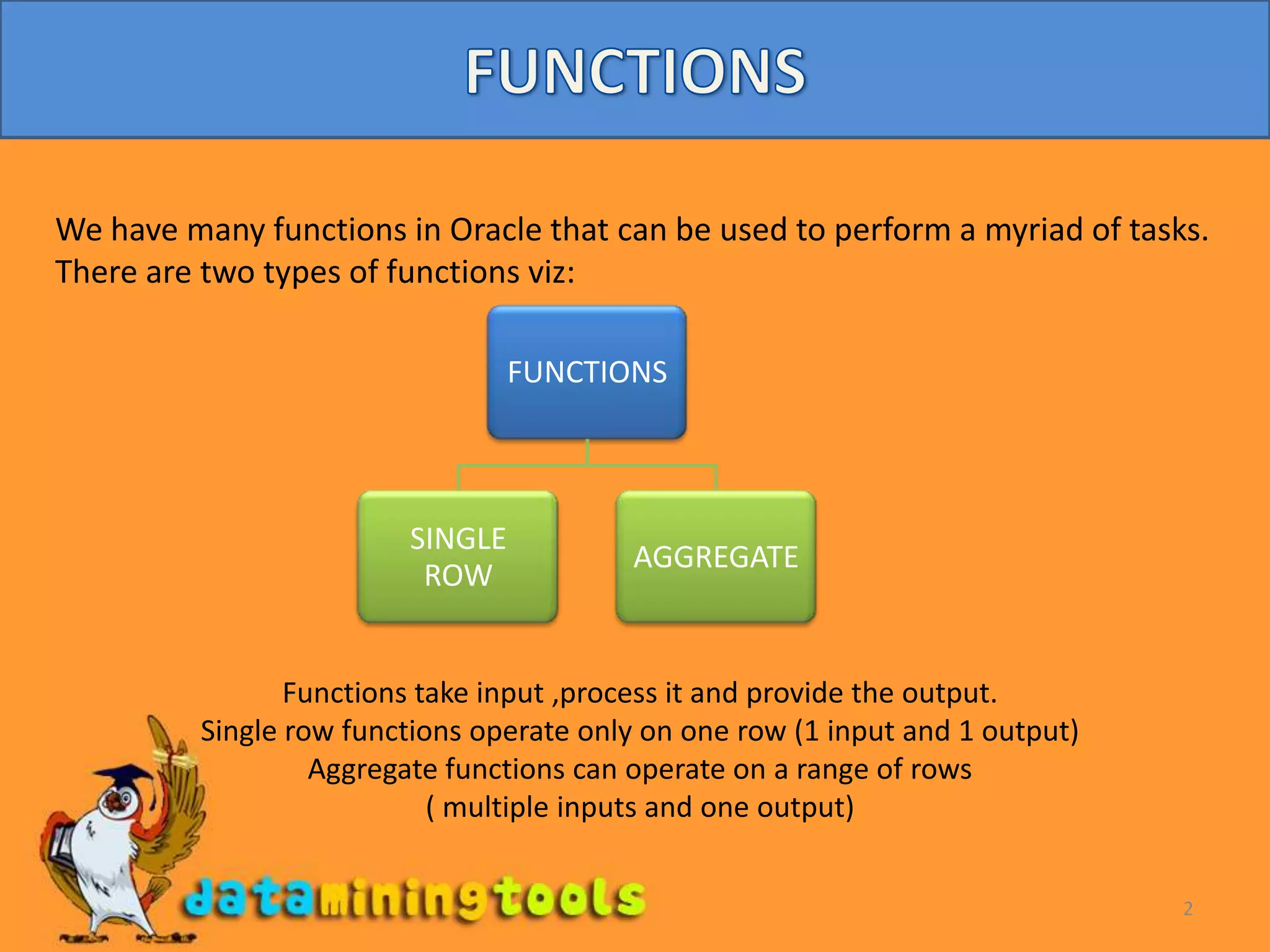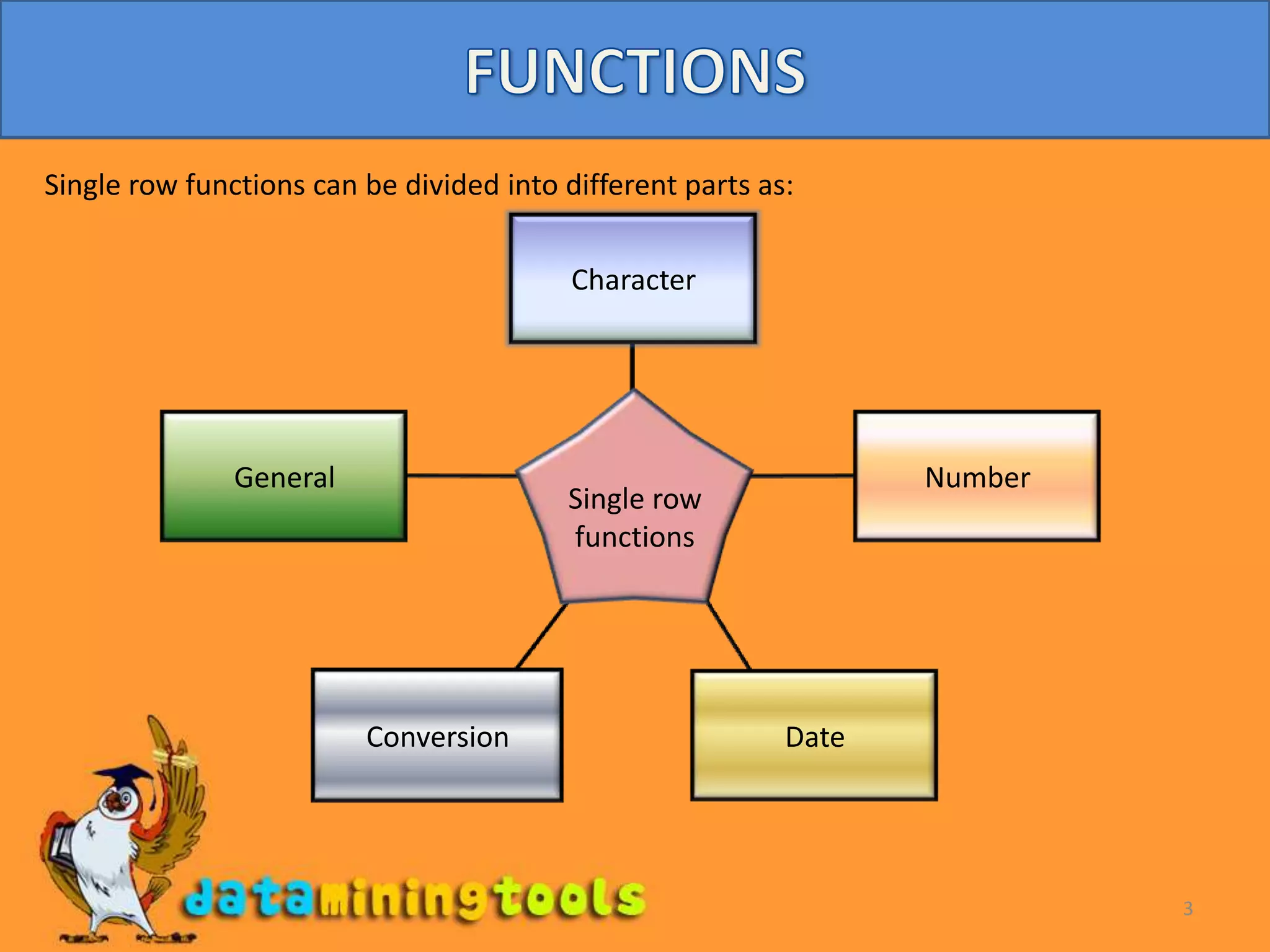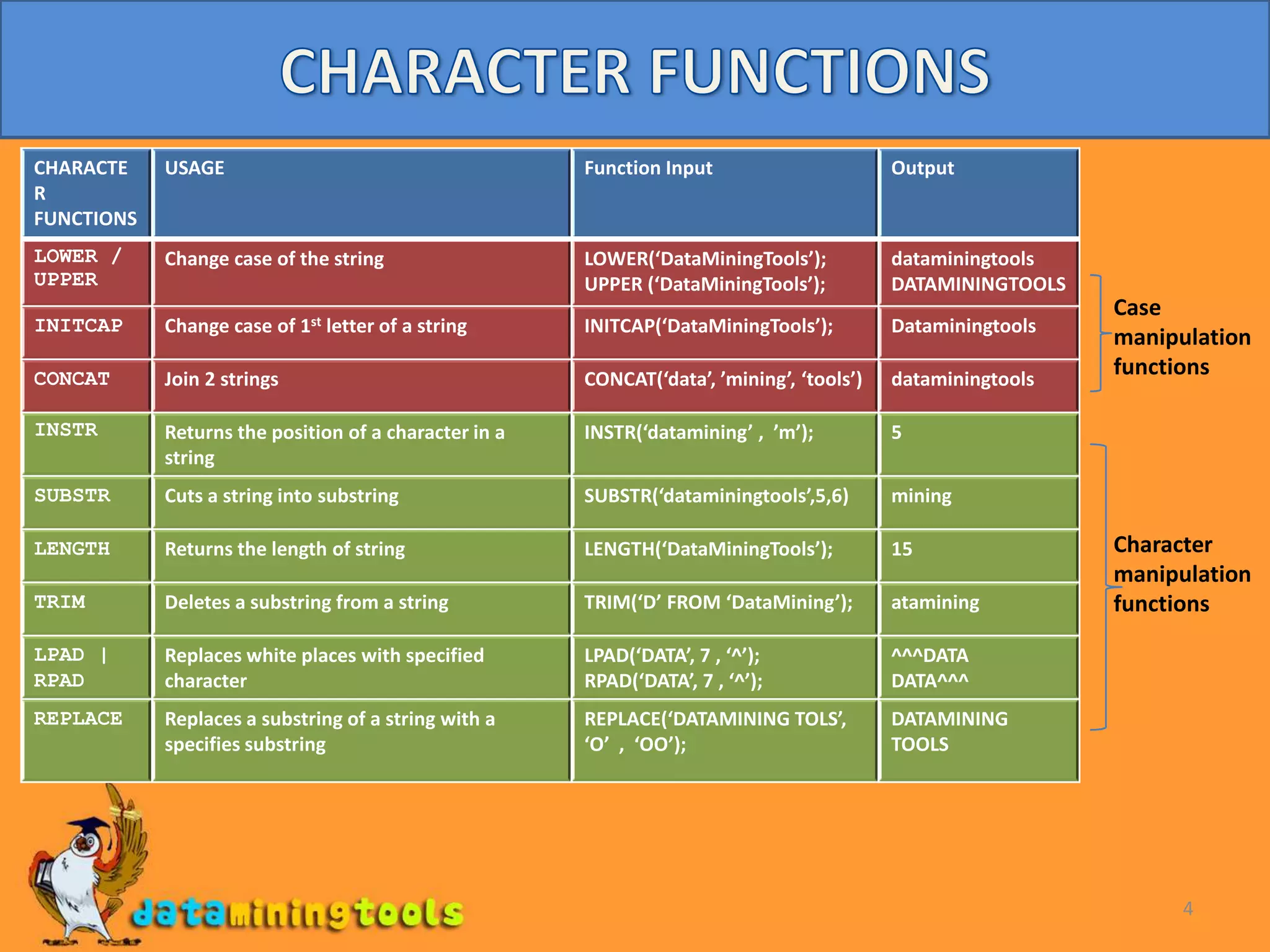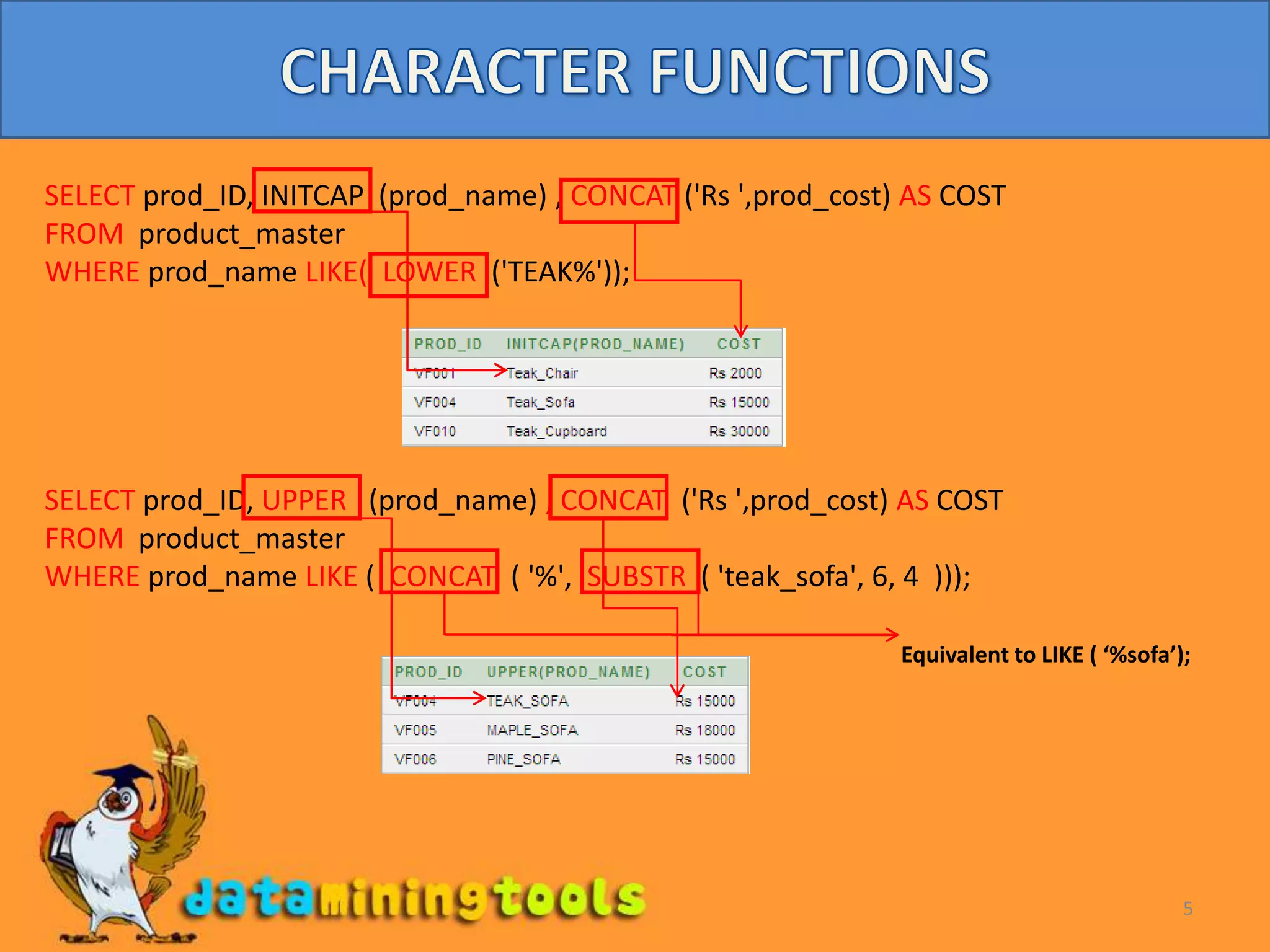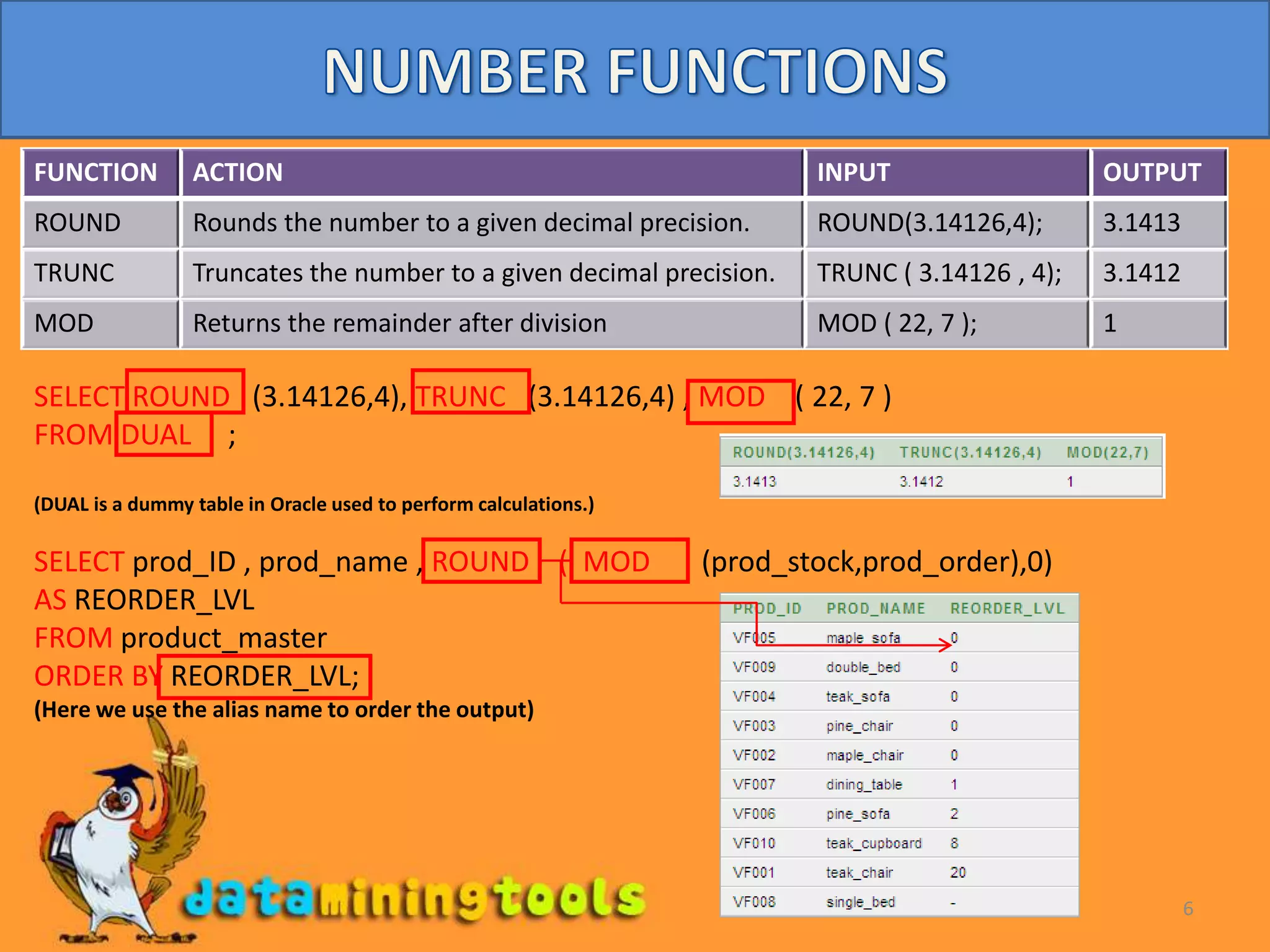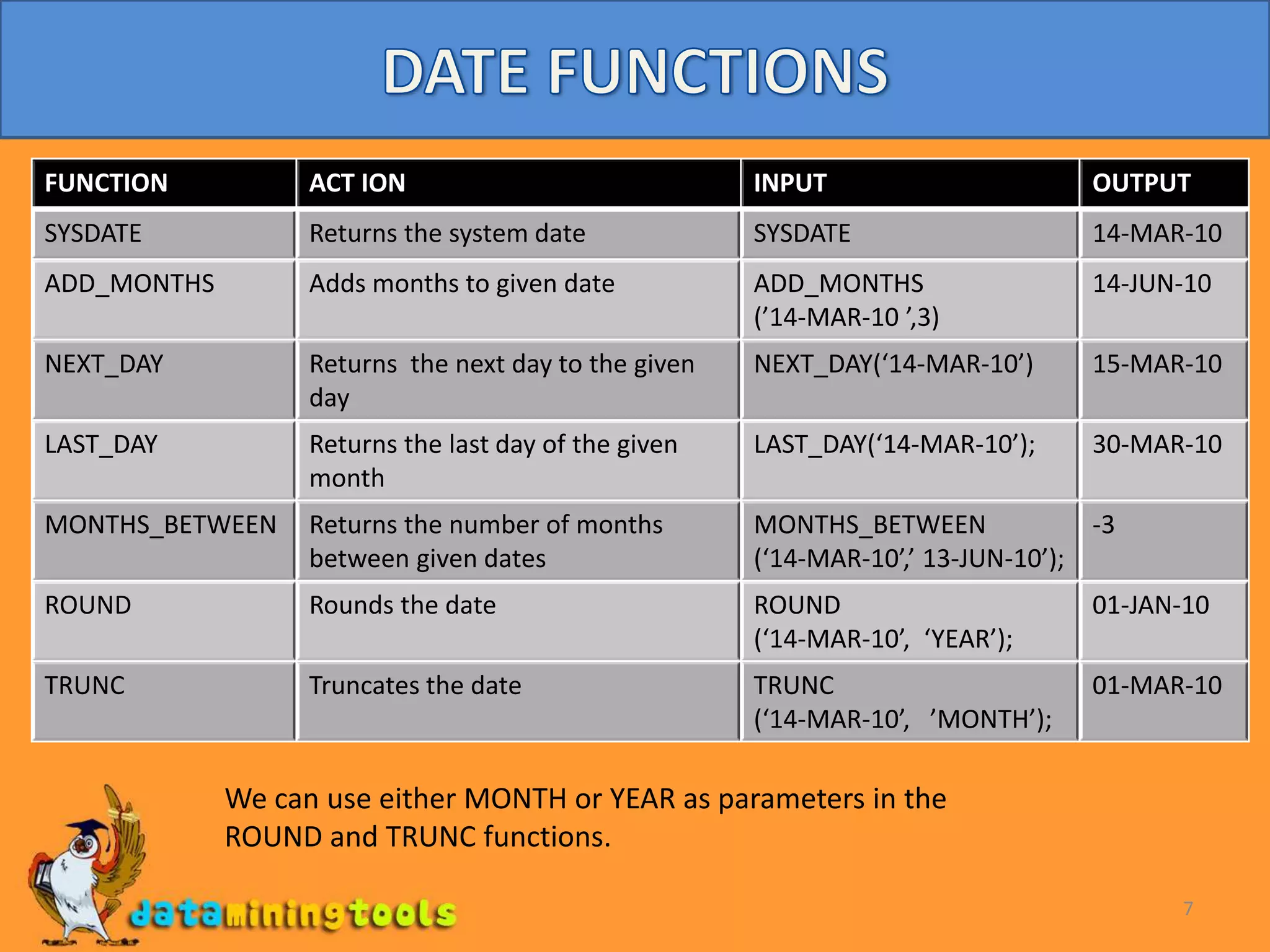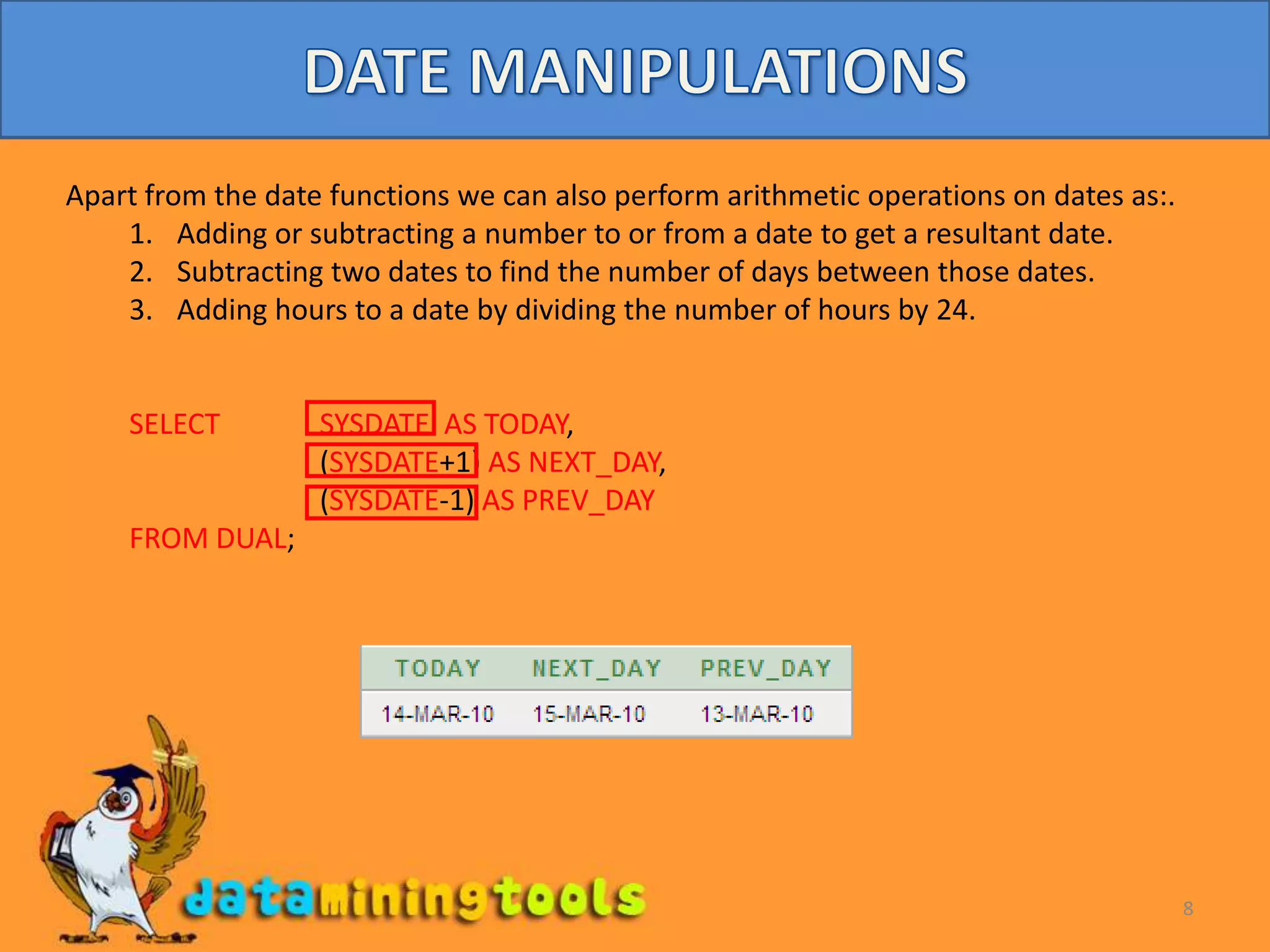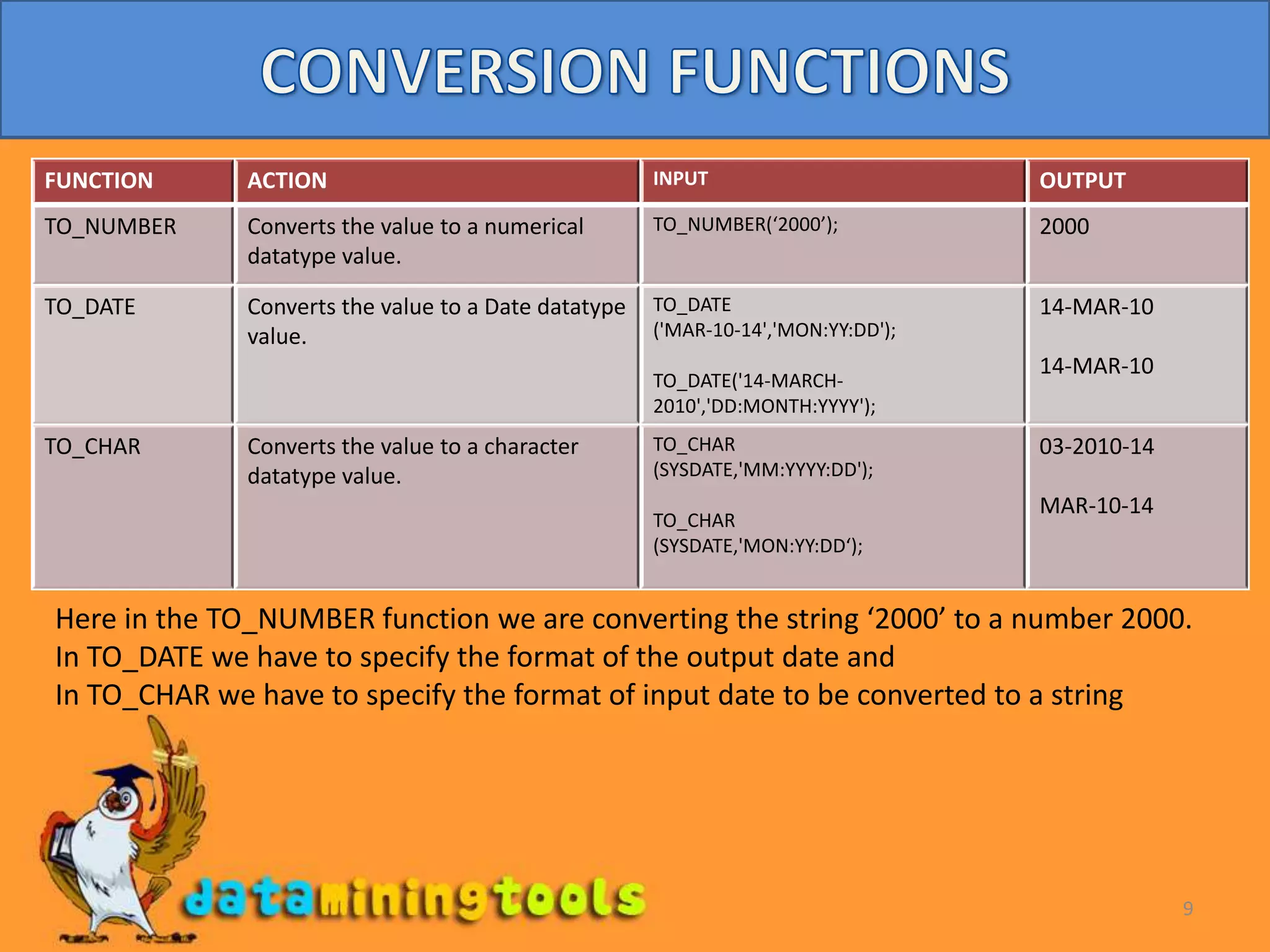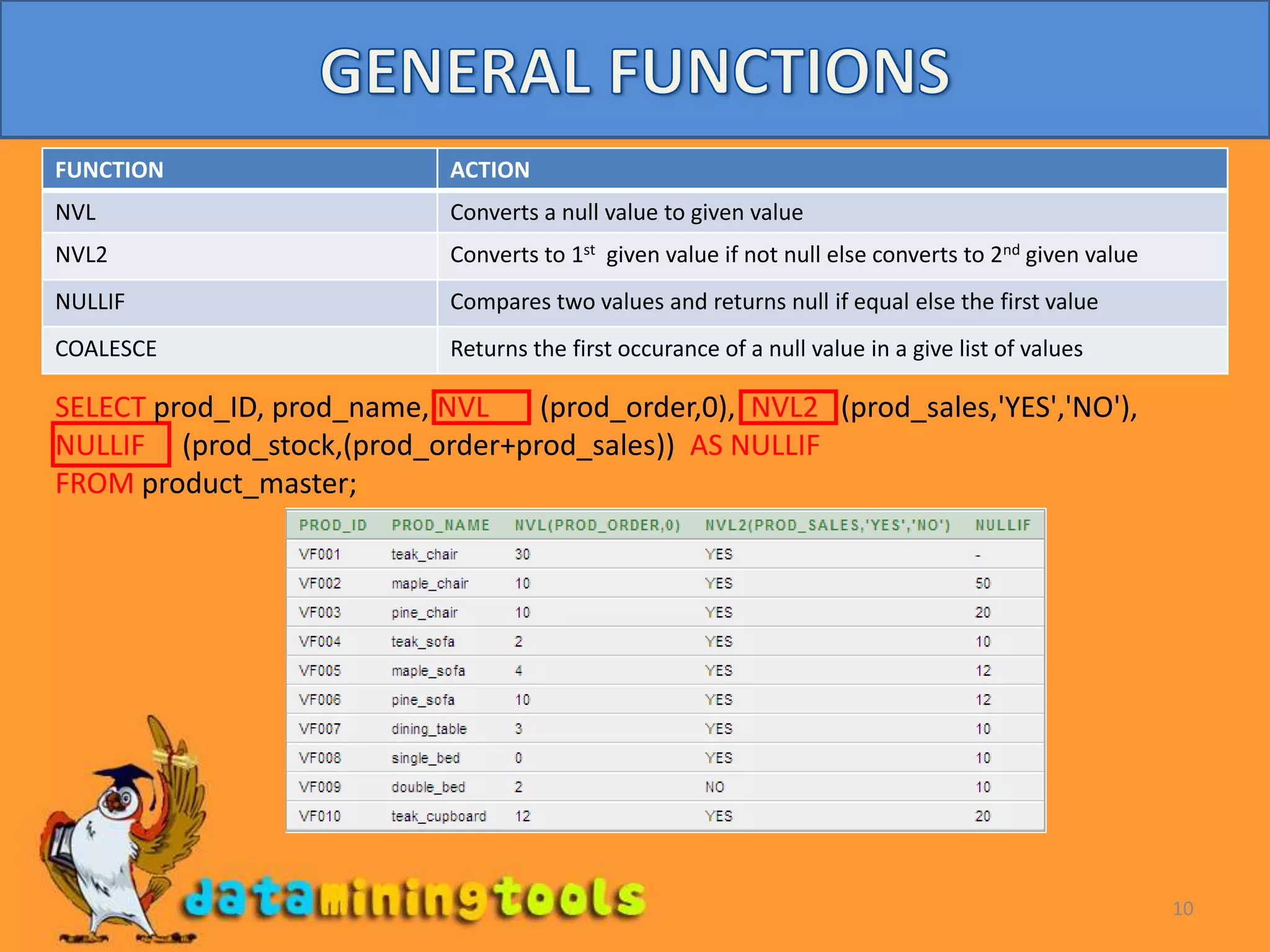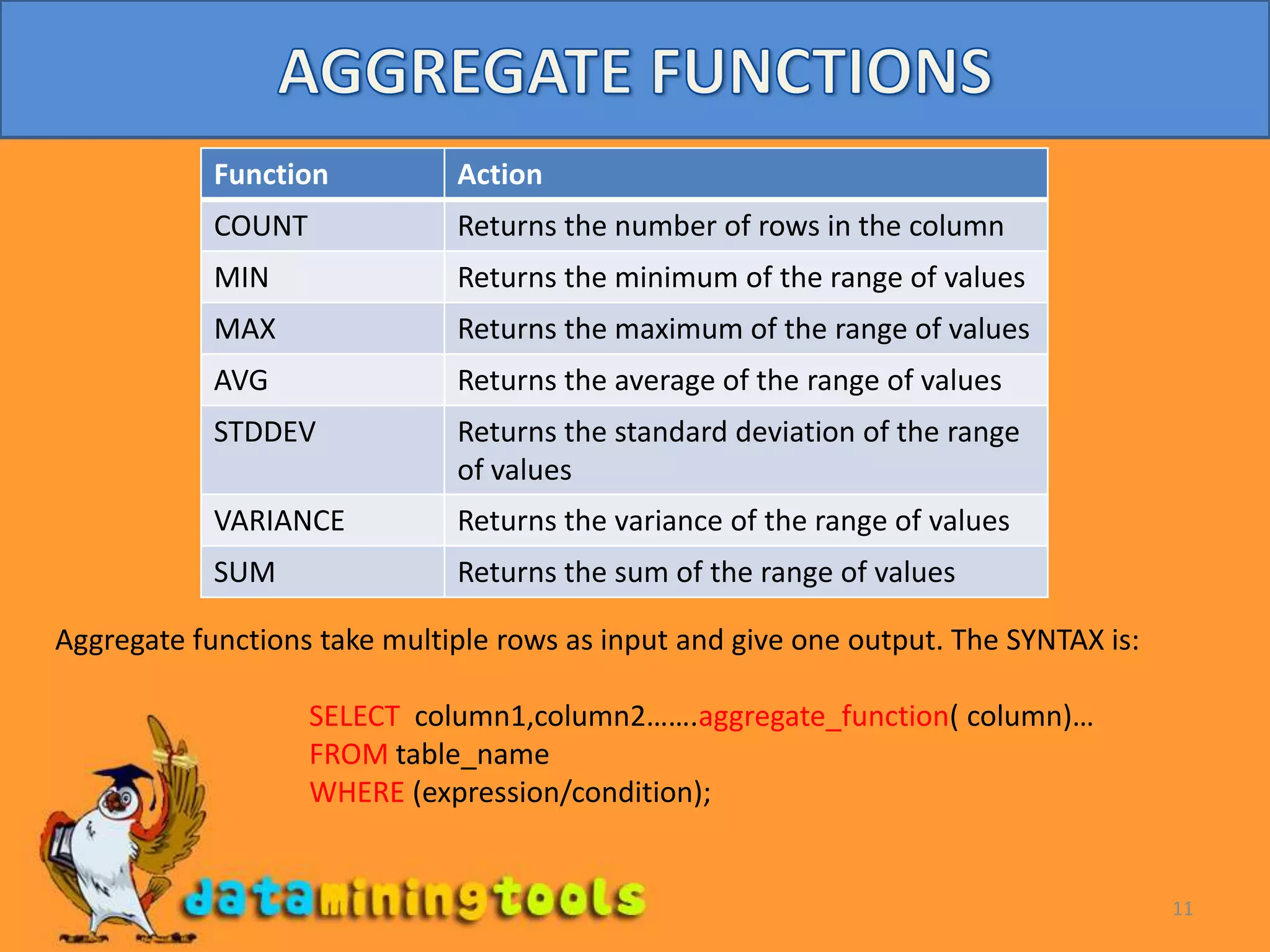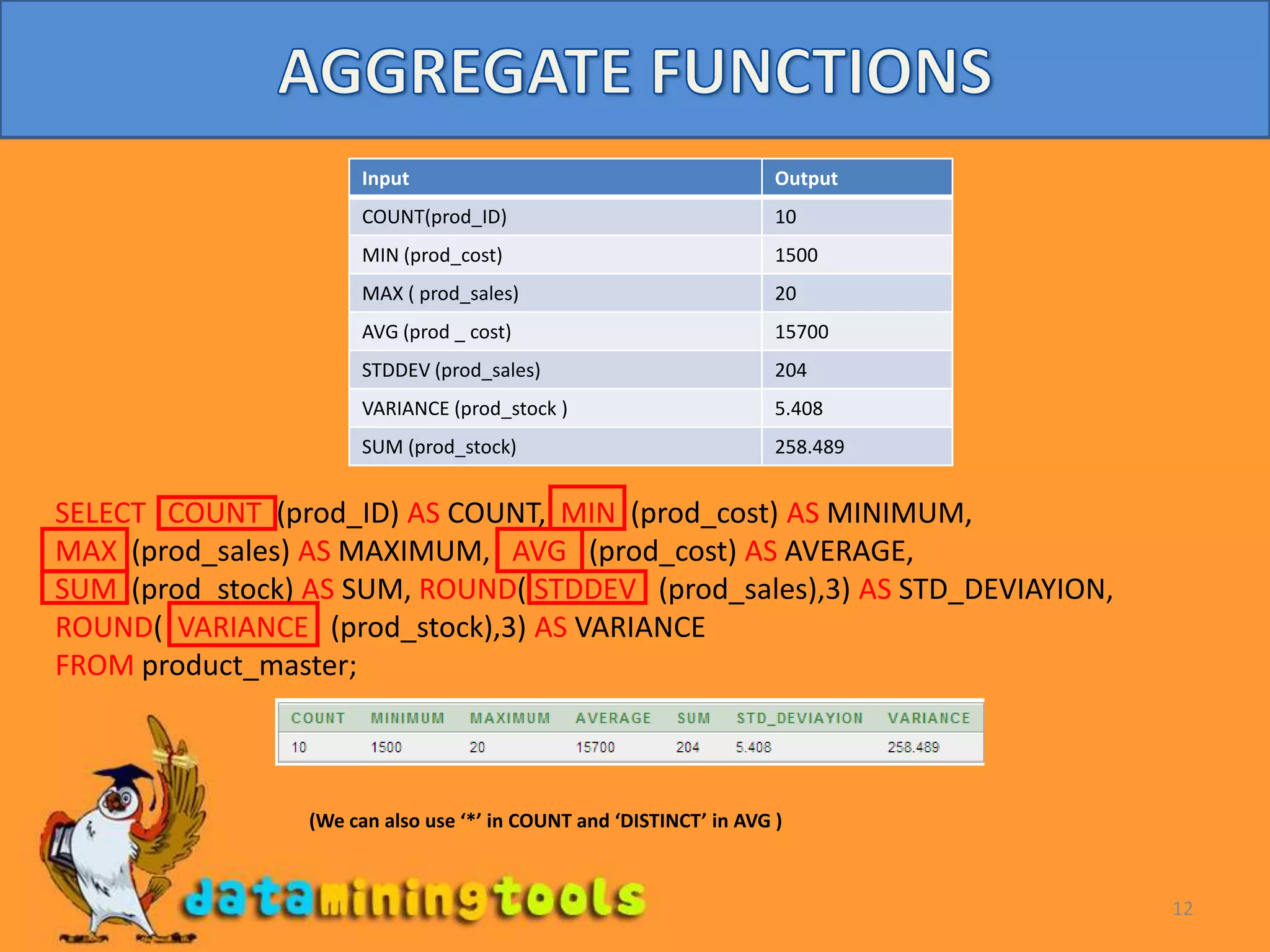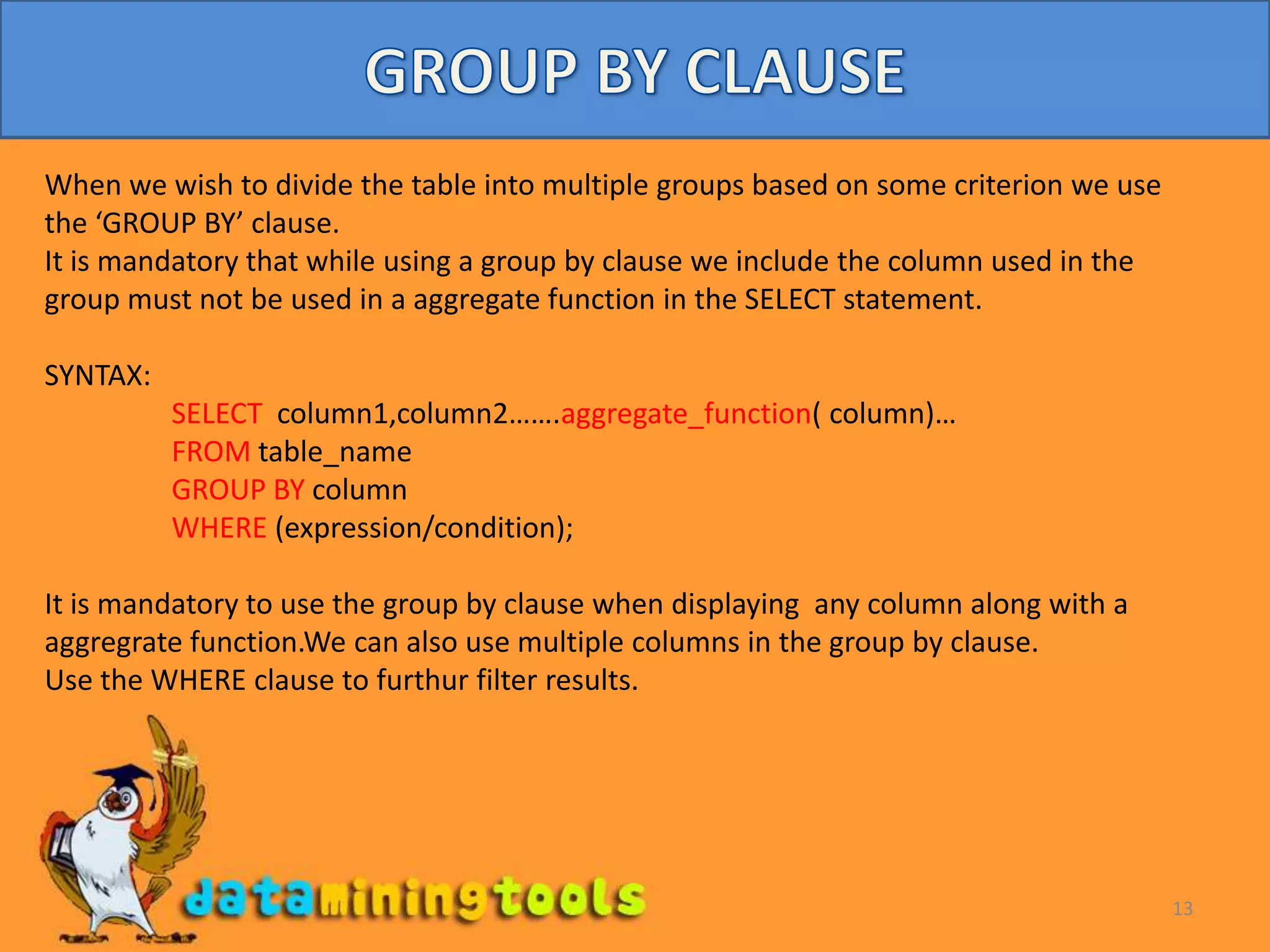This document discusses functions and the GROUP BY clause in Oracle. It covers single row functions like character, number, date functions and aggregate functions that operate on multiple rows. Examples are provided to demonstrate character functions like INITCAP, UPPER, SUBSTR and number functions like ROUND, TRUNC, MOD. Date functions like MONTH, YEAR and date arithmetic are also covered. Conversion, general functions like NVL, NVL2, NULLIF are explained. The syntax for aggregate functions like COUNT, MIN, MAX, AVG, SUM with the GROUP BY clause is demonstrated to group and filter results.
